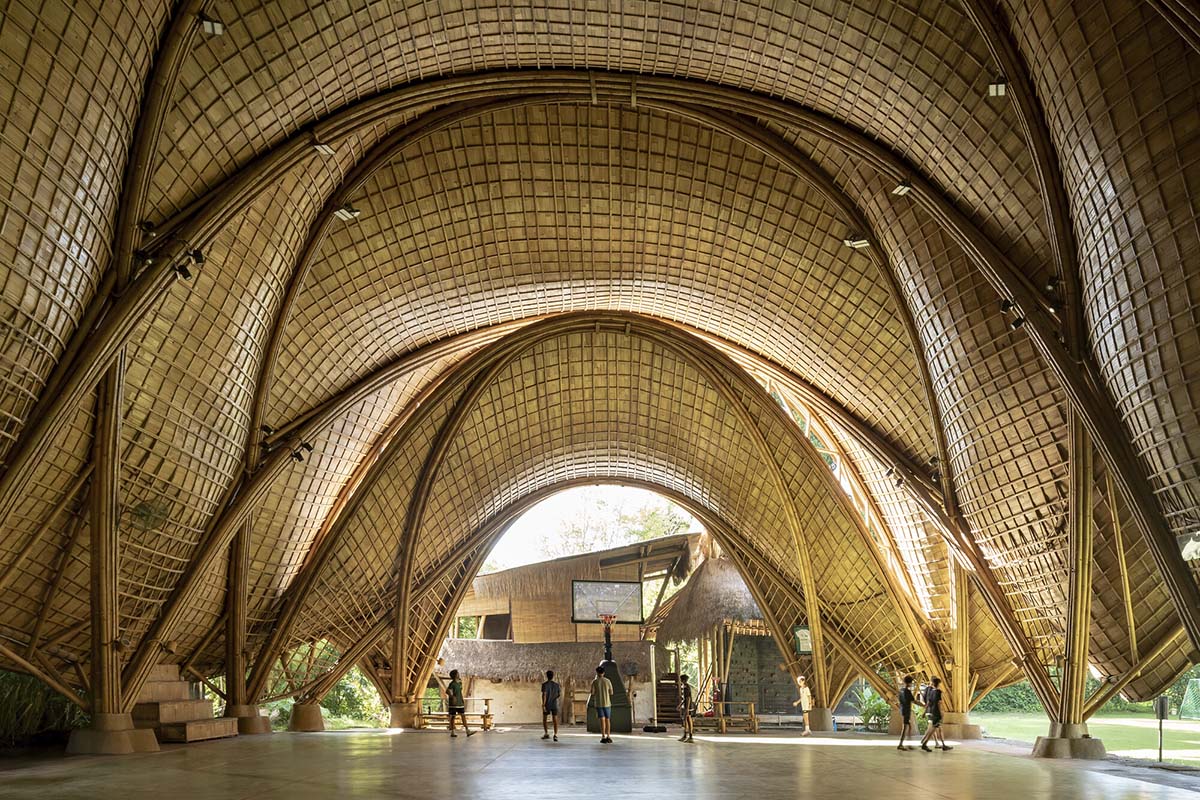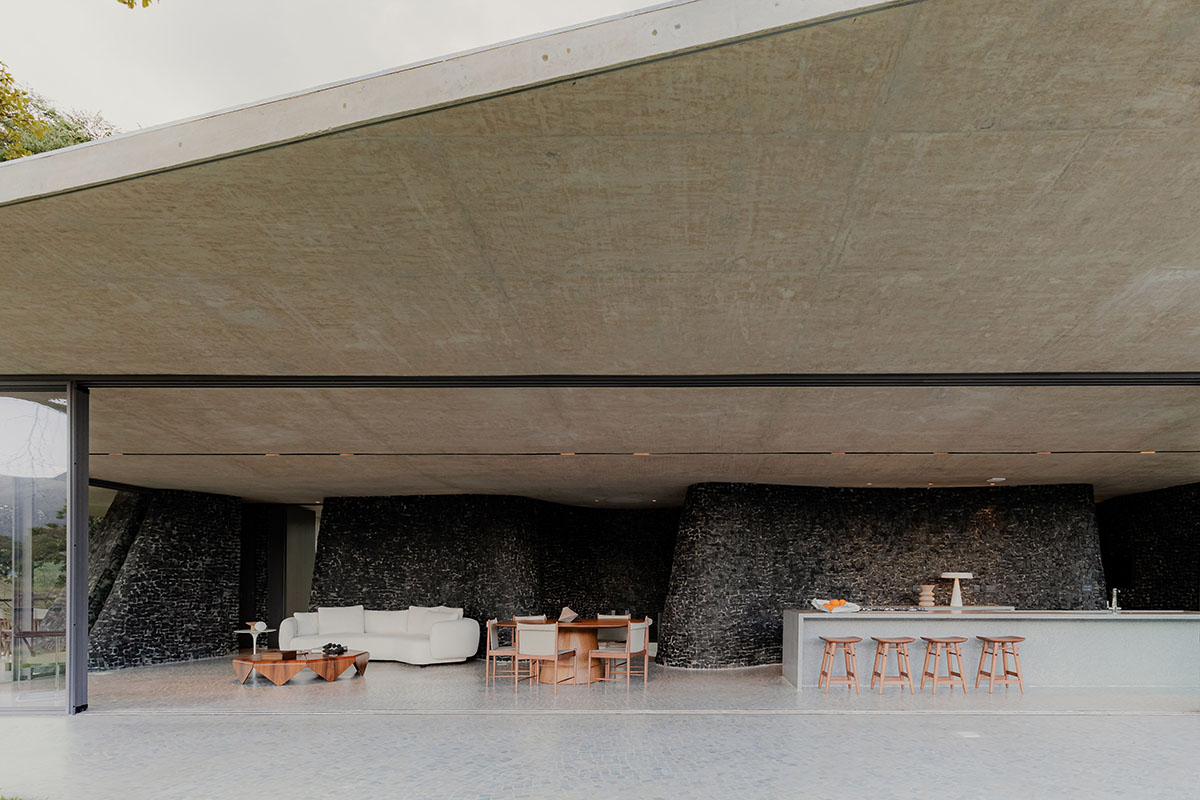The Intelligent Envelope: How Composites Think, Adapt, and Perform
Heydar Aliyev Center | © Olivier Blanchette via Unsplash
In contemporary architectural discourse, the building envelope is no longer a passive partition but a dynamic interface capable of interaction, regulation, and adaptation. Amid rising environmental complexity and performance demands, composite materials are emerging as enablers of this transformation. Their potential goes far beyond lightweight strength; composites are redefining what intelligence means in architectural materiality.
As the industry pivots toward energy-conscious design, real-time responsiveness, and multi-functional skins, composites provide structural solutions and performative systems. In this context, the envelope becomes a site of intelligence.
From Passive Shells to Active Systems
For centuries, architectural skins served primarily as barriers, blocking weather, enclosing space, and symbolizing permanence. But the 21st century demands more. We require façades that filter air and light, mediate thermal flux, integrate sensors, and generate power. Traditional materials, limited by monolithic performance and weight, have struggled to adapt. Composites, by contrast, are inherently systemic. They are engineered layers rather than singular substances.
Through the integration of fibers and matrices, composites enable architectural envelopes that perform structurally while accommodating embedded systems such as thermal insulation, acoustic control, impact resistance, and photoreactivity. These characteristics make them prime candidates for high-performance envelopes in buildings and infrastructure alike.
In the Qatar Integrated Railway Project, composite roofing and FRP façade panels were employed to meet the demands of the harsh desert environment. This solution reduced structural loads and improved thermal performance while ensuring long-term durability in a climate defined by extremes.
Performance Layering and Embedded Intelligence
What distinguishes composites from conventional materials is their capacity to combine multiple performance layers in one unified system. Instead of applying insulation, waterproofing, and cladding in sequence, a composite panel can consolidate these into a single prefabricated, high-performance element.
A compelling example is the Eco Casa in Australia, designed by Ian Wright, which used frameless DuFLEX composite panels. The result was an environmentally conscious home with significantly reduced material waste, enhanced thermal performance, and minimized emissions. These outcomes demonstrate how composites offer design efficiency and ecological responsibility.
The capacity for prefabrication and integration is particularly valuable in settings where labor conditions, transportation logistics, or weather exposure make traditional multi-layered construction inefficient or impractical.
Composites with a Nervous System: Sensing the Built Environment
Recent innovations in smart composites extend these capabilities further. By embedding fiber-optic or piezoresistive sensors into composite assemblies, architects and engineers can develop building skins that sense stress, temperature changes, humidity, or vibration in real-time. These responsive façades can feed data into building management systems, enabling performance optimization or alerting maintenance teams to signs of wear or structural fatigue.
This functionality has been successfully explored in transport infrastructure. The King Abdullah High-Speed Rail Station in Saudi Arabia used 27-meter composite sandwich panels to span vast distances with minimal support. The lightweight system reduced the need for extensive reinforcement while enabling thermal and mechanical performance in a climate that demands resilience.
Such examples are foundational to a future in which architecture does not merely resist the environment but interprets it.
Formal Freedom Meets Functional Responsiveness
Guangzhou Opera House | © Scarbor Siu via Unsplash
Beyond embedded intelligence, composites also expand formal expression. Their moldability, especially with parametric design and digital fabrication, allows for envelopes that curve, fold, and morph in unattainable ways with conventional rigid materials.
The Guangzhou Opera House, designed by Zaha Hadid Architects, is a defining example. Advanced composite assemblies that merged structural demands with formal ambition enabled its seamless curvatures and sharp transitions. These systems supported high-precision details and complex geometries while reducing material weight and installation complexity.
This freedom extends to smaller-scale yet equally ambitious projects. At the Tilburg School for VAVO, translucent composite panels embedded with knitted textiles reference local craft while offering thermal performance and design cohesion. Such examples show that intelligence in architecture includes cultural sensitivity as well as technical adaptability.
Toward Circular and Regenerative Envelopes
The sustainability potential of composites is often overlooked. While early generations relied heavily on fossil-derived materials, newer systems use bio-based resins, natural fibers like flax and basalt, and recyclable matrices that fit into circular design models. Composite panels can now be designed for disassembly, repurposing, or reintegration into new construction, minimizing waste and conserving embodied energy.
The Pasarela de Almuñécar in Spain exemplifies this ethos. As the world’s longest carbon-fiber walkway, it replaced heavier materials and extended structural lifespan while reducing maintenance. The project signals how composites can fulfill both technical and ecological ambitions.
Efforts to embed digital tracking into panels, such as RFID tags, also support long-term monitoring and facilitate reuse planning. This vision aligns with emerging concepts like material passports, which will play a critical role in lifecycle accountability.
Pasarela de Almuñécar in Spain | © Luis Garcia, CC by 3.0
Overcoming Barriers to Adoption
Despite the clear advantages, composite adoption in architecture still faces notable hurdles. First is the challenge of integration with legacy materials such as concrete, stone, or steel. Connection detailing requires careful coordination to ensure structural continuity and thermal performance.
Second is the perception of cost. While composites may require a higher upfront investment, their lower maintenance demands, improved energy performance, and reduced structural requirements often result in favorable long-term economics.
Finally, regulatory frameworks continue to evolve. Building codes have been slow to reflect the unique properties of composites, although this is changing as standardization increases and successful pilot projects proliferate.
A Vision for the Future: Architecture as Adaptive Intelligence
Composites are not merely substitutes for traditional materials. They represent a paradigm shift in how we understand performance, integration, and the role of material in space-making. As architecture becomes increasingly data-driven, climate-responsive, and energy-conscious, the intelligent envelope will become the norm rather than the exception.
Composites make this future feasible by offering structural capability, aesthetic freedom, environmental stewardship, and embedded intelligence within a single engineered solution. From high-speed rail terminals to cultural landmarks, these materials are shaping a new kind of architecture that listens, learns, and evolves.
It is no longer sufficient for architecture to stand still. The next generation of buildings must adapt, interact, and perform. Composites make that future tangible.
Learn More
Explore how composite materials are redefining the building envelope in the construction sector and beyond: Visit Composites.Archi
by ArchEyes Team
Leave a comment
#intelligent #envelope #how #composites #thinkThe Intelligent Envelope: How Composites Think, Adapt, and Perform
Heydar Aliyev Center | © Olivier Blanchette via Unsplash
In contemporary architectural discourse, the building envelope is no longer a passive partition but a dynamic interface capable of interaction, regulation, and adaptation. Amid rising environmental complexity and performance demands, composite materials are emerging as enablers of this transformation. Their potential goes far beyond lightweight strength; composites are redefining what intelligence means in architectural materiality.
As the industry pivots toward energy-conscious design, real-time responsiveness, and multi-functional skins, composites provide structural solutions and performative systems. In this context, the envelope becomes a site of intelligence.
From Passive Shells to Active Systems
For centuries, architectural skins served primarily as barriers, blocking weather, enclosing space, and symbolizing permanence. But the 21st century demands more. We require façades that filter air and light, mediate thermal flux, integrate sensors, and generate power. Traditional materials, limited by monolithic performance and weight, have struggled to adapt. Composites, by contrast, are inherently systemic. They are engineered layers rather than singular substances.
Through the integration of fibers and matrices, composites enable architectural envelopes that perform structurally while accommodating embedded systems such as thermal insulation, acoustic control, impact resistance, and photoreactivity. These characteristics make them prime candidates for high-performance envelopes in buildings and infrastructure alike.
In the Qatar Integrated Railway Project, composite roofing and FRP façade panels were employed to meet the demands of the harsh desert environment. This solution reduced structural loads and improved thermal performance while ensuring long-term durability in a climate defined by extremes.
Performance Layering and Embedded Intelligence
What distinguishes composites from conventional materials is their capacity to combine multiple performance layers in one unified system. Instead of applying insulation, waterproofing, and cladding in sequence, a composite panel can consolidate these into a single prefabricated, high-performance element.
A compelling example is the Eco Casa in Australia, designed by Ian Wright, which used frameless DuFLEX composite panels. The result was an environmentally conscious home with significantly reduced material waste, enhanced thermal performance, and minimized emissions. These outcomes demonstrate how composites offer design efficiency and ecological responsibility.
The capacity for prefabrication and integration is particularly valuable in settings where labor conditions, transportation logistics, or weather exposure make traditional multi-layered construction inefficient or impractical.
Composites with a Nervous System: Sensing the Built Environment
Recent innovations in smart composites extend these capabilities further. By embedding fiber-optic or piezoresistive sensors into composite assemblies, architects and engineers can develop building skins that sense stress, temperature changes, humidity, or vibration in real-time. These responsive façades can feed data into building management systems, enabling performance optimization or alerting maintenance teams to signs of wear or structural fatigue.
This functionality has been successfully explored in transport infrastructure. The King Abdullah High-Speed Rail Station in Saudi Arabia used 27-meter composite sandwich panels to span vast distances with minimal support. The lightweight system reduced the need for extensive reinforcement while enabling thermal and mechanical performance in a climate that demands resilience.
Such examples are foundational to a future in which architecture does not merely resist the environment but interprets it.
Formal Freedom Meets Functional Responsiveness
Guangzhou Opera House | © Scarbor Siu via Unsplash
Beyond embedded intelligence, composites also expand formal expression. Their moldability, especially with parametric design and digital fabrication, allows for envelopes that curve, fold, and morph in unattainable ways with conventional rigid materials.
The Guangzhou Opera House, designed by Zaha Hadid Architects, is a defining example. Advanced composite assemblies that merged structural demands with formal ambition enabled its seamless curvatures and sharp transitions. These systems supported high-precision details and complex geometries while reducing material weight and installation complexity.
This freedom extends to smaller-scale yet equally ambitious projects. At the Tilburg School for VAVO, translucent composite panels embedded with knitted textiles reference local craft while offering thermal performance and design cohesion. Such examples show that intelligence in architecture includes cultural sensitivity as well as technical adaptability.
Toward Circular and Regenerative Envelopes
The sustainability potential of composites is often overlooked. While early generations relied heavily on fossil-derived materials, newer systems use bio-based resins, natural fibers like flax and basalt, and recyclable matrices that fit into circular design models. Composite panels can now be designed for disassembly, repurposing, or reintegration into new construction, minimizing waste and conserving embodied energy.
The Pasarela de Almuñécar in Spain exemplifies this ethos. As the world’s longest carbon-fiber walkway, it replaced heavier materials and extended structural lifespan while reducing maintenance. The project signals how composites can fulfill both technical and ecological ambitions.
Efforts to embed digital tracking into panels, such as RFID tags, also support long-term monitoring and facilitate reuse planning. This vision aligns with emerging concepts like material passports, which will play a critical role in lifecycle accountability.
Pasarela de Almuñécar in Spain | © Luis Garcia, CC by 3.0
Overcoming Barriers to Adoption
Despite the clear advantages, composite adoption in architecture still faces notable hurdles. First is the challenge of integration with legacy materials such as concrete, stone, or steel. Connection detailing requires careful coordination to ensure structural continuity and thermal performance.
Second is the perception of cost. While composites may require a higher upfront investment, their lower maintenance demands, improved energy performance, and reduced structural requirements often result in favorable long-term economics.
Finally, regulatory frameworks continue to evolve. Building codes have been slow to reflect the unique properties of composites, although this is changing as standardization increases and successful pilot projects proliferate.
A Vision for the Future: Architecture as Adaptive Intelligence
Composites are not merely substitutes for traditional materials. They represent a paradigm shift in how we understand performance, integration, and the role of material in space-making. As architecture becomes increasingly data-driven, climate-responsive, and energy-conscious, the intelligent envelope will become the norm rather than the exception.
Composites make this future feasible by offering structural capability, aesthetic freedom, environmental stewardship, and embedded intelligence within a single engineered solution. From high-speed rail terminals to cultural landmarks, these materials are shaping a new kind of architecture that listens, learns, and evolves.
It is no longer sufficient for architecture to stand still. The next generation of buildings must adapt, interact, and perform. Composites make that future tangible.
Learn More
Explore how composite materials are redefining the building envelope in the construction sector and beyond: Visit Composites.Archi
by ArchEyes Team
Leave a comment
#intelligent #envelope #how #composites #think















